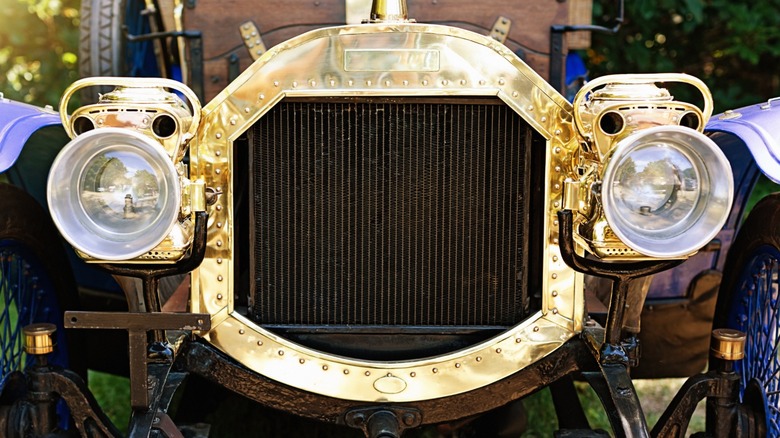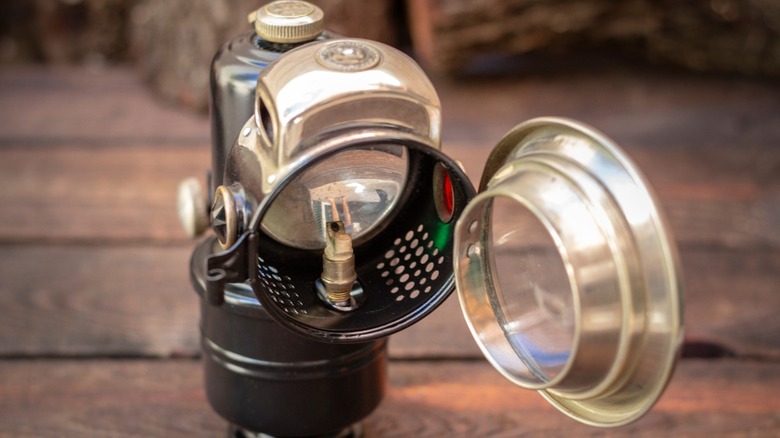Car Headlights Existed Long Before Light Bulbs – So How Did They Work?
There's a debate on when exactly light bulbs were invented. One of the earliest recordings of an electric "bulb" dates to 1801-02, when English chemist Sir Humphry Davy heated a platinum strip to create a decently bright but short-lived incandescent lamp. About 80 years later, American inventor and businessman Thomas Edison developed and patented a more practical, long-lasting carbon-filament bulb — a patent that made its founder very rich. Thus, 1879 became the year many assume to be the true invention of the light bulb.
However, cars didn't reach roads in large numbers till the 1890s, just a few years after Karl Benz filed a patent for his "Benz Patent-Motorwagen," which many consider the first car ever invented. So, technically, light bulbs are older than automobiles — even going by the "Thomas Edison invented the light bulb" narrative. That said, they didn't adopt roads with Edison-level light bulbs as soon as they were invented; instead, they inherited headlamp technology from earlier horse-drawn vehicles.
The horse-drawn carriages used driving lamps fueled by acetylene gas. According to recorded patents, the lamp would hold some calcium carbide while a water reservoir dripped water onto it; this produced acetylene gas, which was piped to burners to create a bright, steady flame. Some vehicles used a compressed acetylene gas tank rather than making the gas directly from carbide. Then, the produced light was directed with reflectors and lenses, and vents let combustion products escape while resisting wind and rain.
What did vehicles use before and after acetylene gas lamps?
As you may have already surmised, many acetylene headlamps were patented and used after Thomas Edison's patent for the incandescent light bulb. So, if earlier carriages weren't using acetylene lamps, what were they using? At this time, a simple side-mounted lantern that used candles or an oil-reservoir-and-wick setup worked just fine. Some of them, like Sleigh Lowe, Bevan and Company's 18th-century lamps, had red rear windows that served as something of a tail light. Many of these lanterns used optics to throw a beam, like a convex bull's-eye lens, and reflectors to focus the light where it's needed. Oil and kerosene lamps were still used on some vehicles up to the acetylene days, such as the dash lantern on Henry Ford's horse-drawn buggy in the 1900s.
While acetylene headlamps were reigning, engineers were already working on electric headlamp replacements, and by 1898, the Columbia Electric car had them as an optional accessory. These bulbs had weak filaments that didn't last long or perform well in automotive use, and they weren't small or powerful enough generatoes to supply current for the Edison lamps of the time. It wasn't until 1912 when Cadillac integrated the Delco starter, lighting, and ignition system into its 1912 car that electric bulbs became a reliable component, because the car now carried a battery and generator as standard equipment. Eventually, in 1940, the U.S. standardized sealed-beam electric headlights for all cars.

